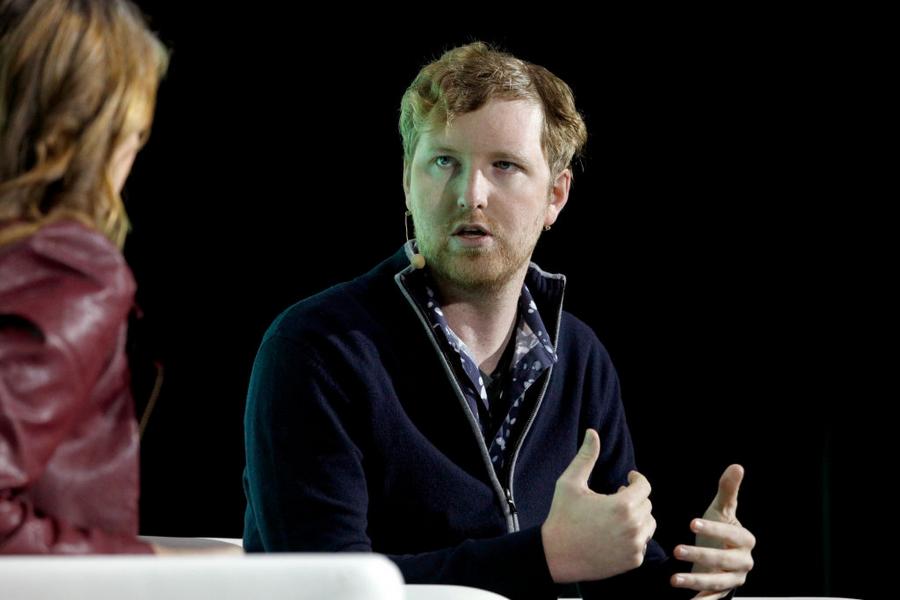Move over, John Collison, there's a new youngest self-made billionaire in town. Austin Russell founded Luminar Technologies when he was 17. Now 25, his net worth has soared to $2.4 billion, after his company went public on the Nasdaq recently. Luminar is a self-driving car startup. This makes him the youngest self-made billionaire. He's also one of the first billionaires to emerge from the self-driving car industry.
Russell holds 104.7 million shares of his company, roughly one third of all available shares. Luminar has a market value of $3.4 billion. Investors in Luminar include Peter Thiel, who helped Russell get Luminar started when he made him a Thiel Fellow in 2012, Alec Gores of The Gores Group, Volvo Cars Tech Fund, and billionaire Dean Metropoulos, who is chairman of Luminar. Thiel's fellowship that Russell was a part of in 2012 offered young people with big ideas $100,000 to drop out of college to pursue their dreams. Thiel has been an advisor to Russell since he dropped out of Stanford to start Luminar in 2012.

(Photo by Kimberly White/Getty Images for TechCrunch)
Russell's Luminar isn't in the business of making self-driving cars, it perfects sensors to help self-driving cars "see" by bouncing a laser beam off objects in the car's path. This technology, called 'lidar,' for light detection and ranging, is fundamental to self-driving cars. The technology is similar to radar, but it uses lasers instead of radio waves. Russell has been selling major car makers prototypes for the past few years. He recently got orders from Volvo, Daimler Truck AG, Chinese carmaker Geely, and Intel Corp's Mobileye. Luminar's SEC filing projected sales of $15 million this year and believe the company will reach over $1 billion in sales by 2026.
Russell has been a prodigy nearly since birth. He memorized the periodic table of elements at two. At six, he took his Nintendo DS game console and turned it into a mobile phone. He filed for his first patent at 13 for an underground water recycling system that reuses water from sprinkler's for future gardening, something that also reduces wastewater. He didn't go to a traditional high school. He spent those years at the Beckman Laser Institute at the University of California, Irvine. He was admitted to Stanford to study physics but dropped out during his freshman year to take the Thiel Fellowship for his lidar idea.
Russell got into lidar early after researching what other companies in the self-driving car space, such as Velodyne, were doing with their laser sensors when he was a teenager. He thought there was a better way. He believes lidar has the ability to save lives in both self-driving cars and in driver-assistance systems. His system is completely different from other companies in the same space as he wanted it to be cheap enough to make so that more companies. He hopes that his contribution will put an end to car accidents.
For now, what's next for Russell? He's building a brand new house in the wealthy San Francisco suburb of Atherton.
/2021/02/GettyImages-1027412766.jpg)
/2019/09/al.jpg)
/2019/08/GettyImages-1144000039.jpg)
/2016/12/John-Collison.jpg)
/2016/10/travis-kalanick.jpg)
/2017/12/GettyImages-458458278.jpg)
/2019/01/James-Altucher.jpg)
/2013/12/dan.jpg)
/2011/12/John-Mara-1.jpg)
:strip_exif()/2020/06/taylor.png)
/2010/12/kate-1.jpg)
/2020/10/the-miz.png)
/2011/12/Rooney-Mara1.jpg)
/2020/08/gc-1.jpg)
/2014/04/GettyImages-886617106.jpg)
/2011/01/Aaron-Rodgers.jpg)
/2022/10/peter-krause.jpg)
/2010/03/emil.jpg)
/2020/04/hailey-joel.png)
/2015/09/Daley-Thompson.jpg)
/2020/10/david.jpg)
/2009/11/Brandon-Jennings.jpg)
/2019/01/Kennedy-Montgomery.jpg)